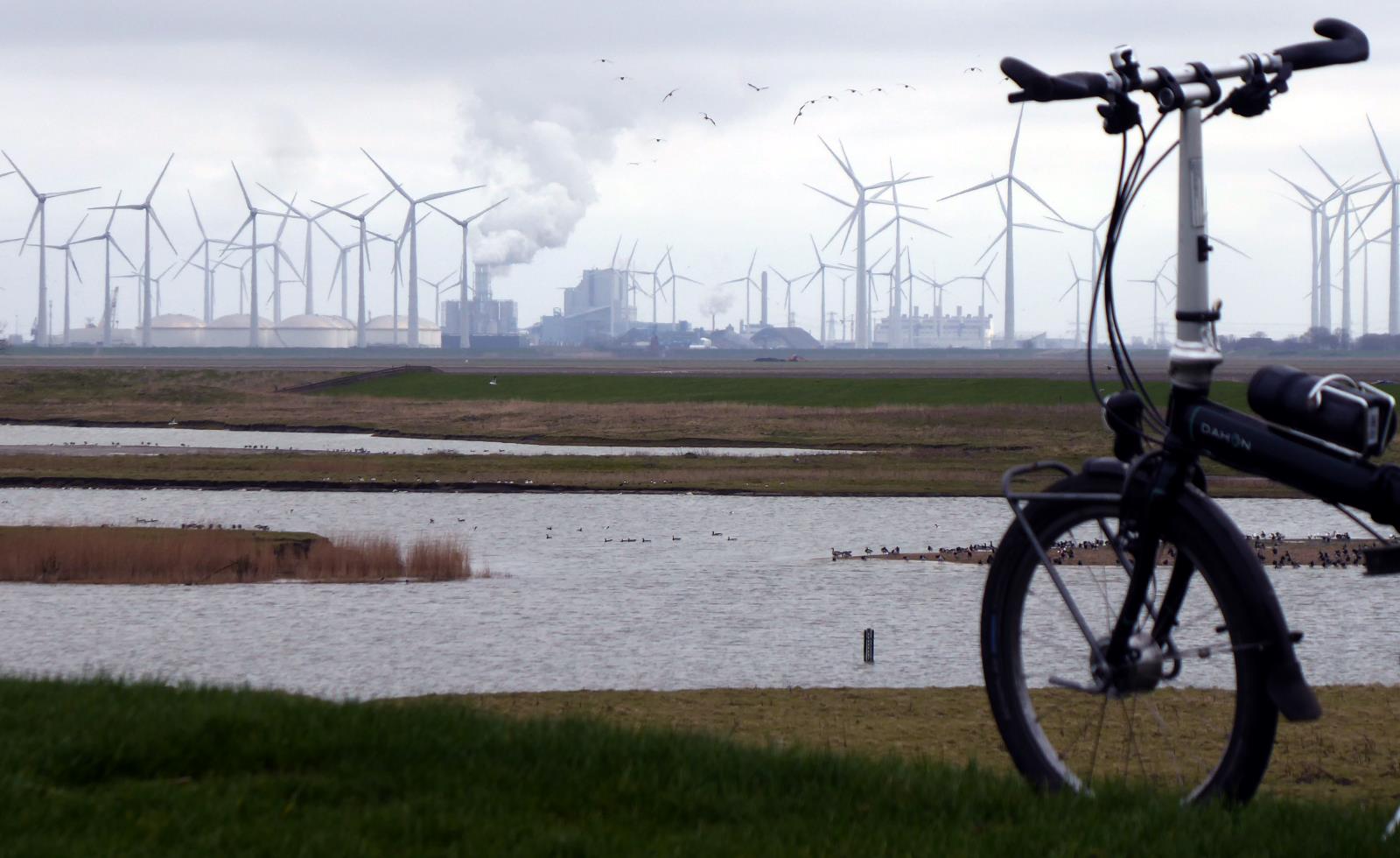I finished the Dutch End to End today by riding the short last leg up to Noordkaap: the lonely, windy, northernmost point of the mainland, with little but electricity pylons, wind turbines and the odd oystercatcher for company.

Another F route took me fast and car-free right from my hostel in the centre of Groningen to the town of Bedum, an appropriate name as it only took a few heartbeats to get there. After that I could use, for the first and only time on this trip, the Netherlands’ code-number system of negotiating its general national cycle network.

The idea is that each junction in an area (knooppunt, ‘node point’) has a two-letter number. And every junction signposts each neighbouring junction. So, simply by following a series of numbers, you can get by bike from anywhere to anywhere: the mathematician’s dream of turning complex debatable information into unambiguous strings of digits. Mathematicians have strange dreams. I know.

Anyway, that means that Bedum to Noordkaap, for instance, is encoded neatly as 7-39-37-18-52-78-67-65-74-70-77-69. For non-mathematicians – normal people, in other words – there are prominent signs displaying useful maps at each junction.

There were a couple of small towns en route to Noordkaap, and Uithuizen, a less small one. Several of them featured handsome early-1900s buildings among the newer square brick boxes that – not unpleasantly, just a bit unimaginatively – characterise much of the Netherlands outside historic cities and villages.

One welcome thing about the rural Neths: you’re never far from a rubbish bin, whether those test-your-aim blikvangers I talked about the other day, or conventional post-mounted ones, some of them miles from anywhere along a bike path. Clearly, in a land where a lot of mail is delivered by pedal power, even some bin lorries are bicycles here.

After Uithuizen it was a windy slog along long flat lanes, through a couple of notches in dykes clearly there to hold back massive tidal surges, to the coast itself. The real coast, not the imaginary one of the LF9 back inland.

It’s austere stuff, with long green banks – dotted with the discarded shells of seabird lunches – fending off the North Sea. I rode along the water side of the bank for a while, on the sloped tarmac that goes down to the shore. Even that, not meant to be a road at all, was smooth and unpotholed.

The tide was out and an island suggested itself on the grey misty horizon. I headed alongside the coast for a few kilometres east until I got to the monument marking the northernmost point: a simple three-pillared affair commemorating three WWII pilots killed here in 1940.

I suppose I could have bought a bottle of champagne or something from Albert Heijn back in Uithuizen, but it was too cold and windy anyway for much of a celebration of my trip’s completion, so I took a few snaps, watched the forest of wind turbines wheel round industriously and the factory chimneys over at Eemshaven hurl smoke into the breeze, saw a lone road cyclist whoosh past with the tailwind, and gazed out over the chilly monochrome horizon.

For a while I was the furthest north person on Dutch soil. Well, sand. Well, apart from that island up there, whatever it is.
I headed back to Uithuizen and got the train back to Groningen. Another very enjoyable End to End bagged.
Conclusion
The Netherlands isn’t scenically the most exciting big-ride you can do. But you don’t come here for the scenery, just as you don’t go to Iran for the pubs. There’s plenty to see and enjoy – the Golden-Age buildings in the historic towns and villages, the remarkable water-based economic history, the way the Dutch have (often literally, in the case of the polders) created their own very modern country with few resources beyond hard-nosed hard work. The people are practical, down-to-earth and generally friendly, humorous and helpful.
It’s not a cheap country but it’s easy to get food, drink and accommodation at sensible-bargain European prices (and I do recommend Vrienden op de Fiets by the way, but be prepared for a lot of emailing to find someone with availability). I was generally paying €30 or so for a hostel, a bit less for VodF, a bit more for a cheap hotel, and I mostly ate out of supermarkets.
But the main attraction of the Netherlands is, of course, the cycling. In traversing the entire country from south to north I hardly encountered motor vehicles at all; perhaps 95% of my route was offroad.
And not just ‘offroad’ in the British sense, of mud and piecemeal chaos, but smooth, wide, pothole-free, direct ‘bicycle roads’ often with priority at junctions. You can just enjoy the business of getting from A to B, and all the way to Z, on a bike, in a stress-free way like nowhere else in the world. I’ve had a great trip, and I’ll be back to cycle again here soon.
Miles today: 33
Miles since Drielandenpunt: 322
Miles Drielandenpunt to Noorkaap: 316
